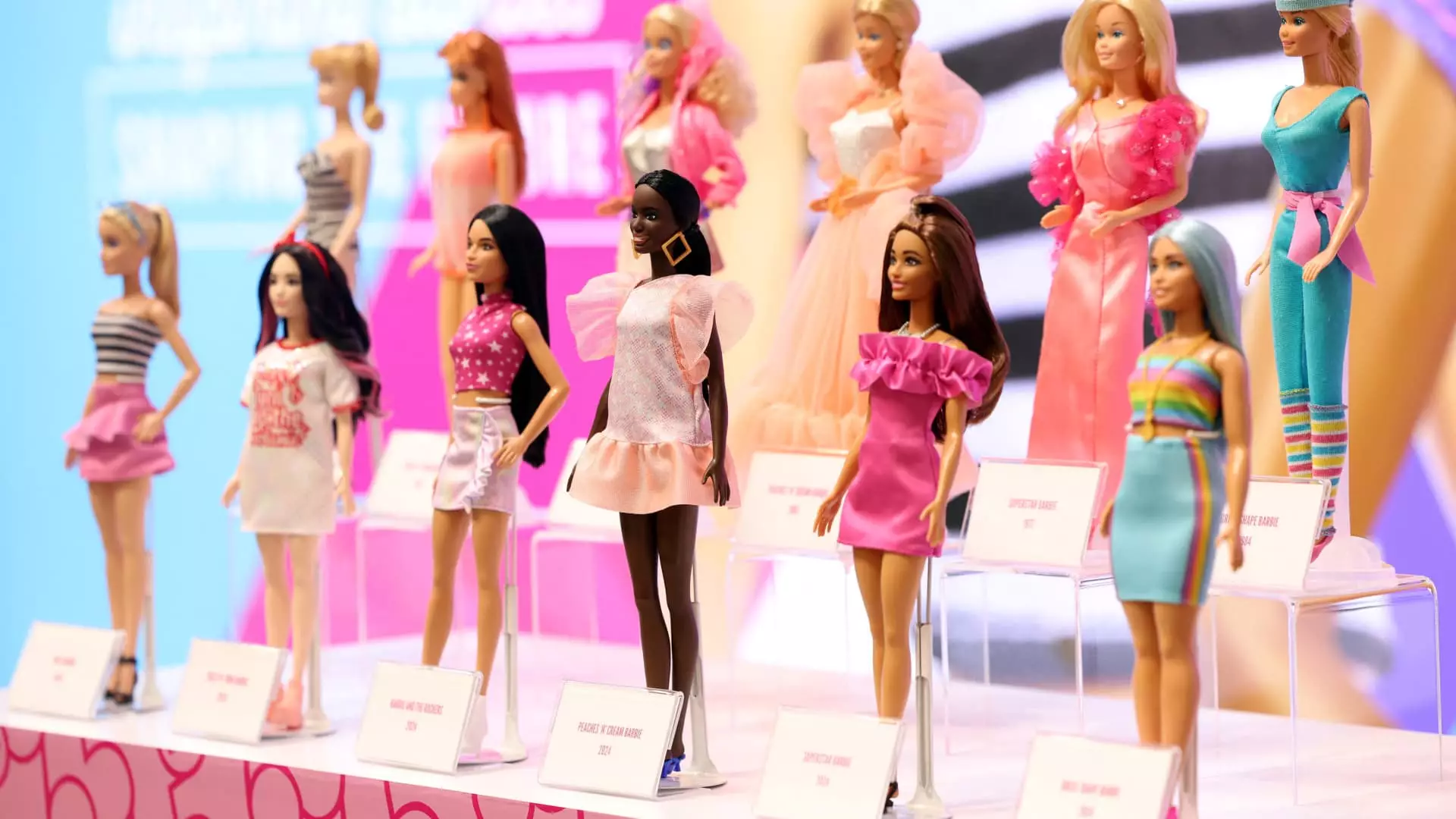In the realm of consumer goods, especially toys, the global supply chain is intricately woven, making it vulnerable to geopolitical fluctuations. Recently, the toy industry, particularly stalwarts like Mattel, has found itself at a critical juncture due to the tariffs enacted by the Trump administration. As of now, a significant portion of Mattel’s products, about 40%, are manufactured in China, with less than 10% coming from Mexico. This reliance on China places the company in a precarious position now that a 10% tariff has been imposed on goods imported from the country. The implications of this move are far-reaching, likely set to alter pricing strategies and supply chain operations across the board.
In response to these tariff threats, Mattel’s finance chief, Anthony DiSilvestro, discussed the company’s proactive strategies on a recent earnings call. The emphasis was placed on altering the supply chain to counteract potential financial hits due to tariffs. DiSilvestro noted that they are considering leveraging their extensive supply chain network, which includes their own factories and third-party operators across multiple countries. However, the situation remains complex; while they aim to alleviate the burden of tariffs, there is a palpable concern among executives regarding the impact on profit margins.
The toy manufacturer must balance the need to maintain consumer prices with the necessity of protecting its bottom line. Such a balancing act typically involves close collaboration with retail partners. According to DiSilvestro, the priority remains consumer-centric, as any decision regarding pricing must reflect both market conditions and company sustainability. The complexity of this decision-making process lies in the volatile nature of international politics, particularly with the current U.S.-China relations that have created uncertainty in the market.
Economists from varying political viewpoints have concurred that these trade levies are unlikely to be absorbed solely by corporations. Instead, it is anticipated that consumers will ultimately bear the brunt of the increased costs through higher retail prices. The implications are significant, especially for a major player like Mattel, which relies heavily on these imports for its products.
Historically, toy prices have been reflective of market demand and production costs, but tariffs introduce an external variable that distorts this equilibrium. If Mattel is compelled to raise its prices, this could range from slightly higher tags on individual toys to a widespread increase across their entire product line, impacting consumer purchasing behaviors and overall sales.
It is of particular importance to note that Mattel is not resting on its laurels in light of the current tariff environment. The company is strategically projecting that by the year 2027, its sourcing from China and Mexico will significantly decrease to over 25% of total global production, down from approximately 50%. This decision points toward a broader shift in manufacturing strategies in response to economic pressures and is indicative of a more adaptable business model.
While the current focus may be on mitigating immediate impacts from tariffs, long-term sustainability will demand a reduction in dependence on high-risk regions. Innovation in production techniques and diversification of supply sources are critical pathways for companies looking to navigate the volatile landscape of international trade. By investing in a more diversified production network, companies like Mattel can achieve greater resilience against future tariffs and supply chain disruptions.
Mattel’s predicament underlines the formidable challenges that contemporary global businesses face in an increasingly protectionist environment. The imposition of tariffs by the Trump administration serves as a wake-up call for not just toy manufacturers, but for all sectors reliant on delicate supply chains. As the company works to restructure its manufacturing practices and considers raising prices, the ultimate outcome will depend on its agility in responding to market signals and geopolitical events. The toy industry is poised for significant transformation, and it remains to be seen how these developments will shape consumer experiences in the years to come.

